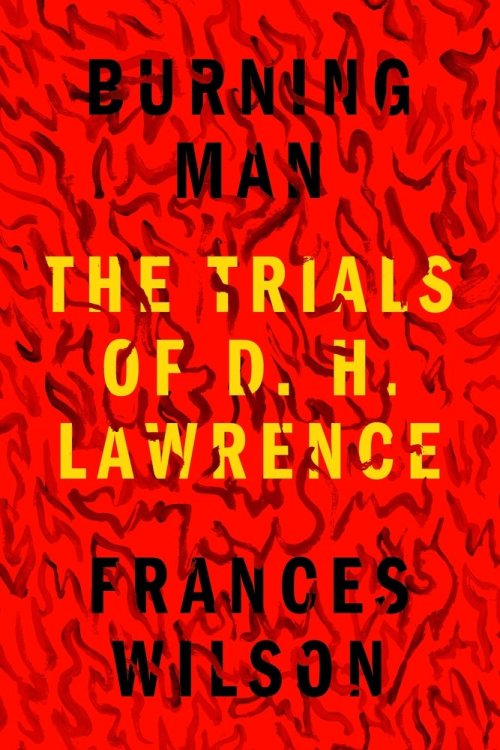[ad_1]
“The proper function of a critic,” wrote D. H. Lawrence in 1923, “is to save the tale from the artist who created it.” Punish the writer, he was saying, but don’t destroy the art. When Lawrence published those words in Studies in Classical American Literature, he wasn’t talking specifically about himself, but the experience of having his own work destroyed must have shaped his thinking. In 1915 his novel The Rainbow was deemed obscene by the Bow Street magistrates’ court. In Burning Man: The Trials of D. H. Lawrence, Frances Wilson suggests that the novelist’s work had been targeted not because of concerns about its obscenity but instead because of irritation about his working-class background, his disapproval of Britain’s involvement in World War I, and the fact that he had a German spouse. After all the unsold copies of The Rainbow were confiscated, they were burned by a hangman outside the Royal Exchange.
Even before the destruction of his novel, Lawrence was already angry at the world. Relatively minor disappointments could inspire his wrath: “Curse the blasted, jelly-boned swines, the slimy, the belly-wriggling invertebrates, the miserable sodding rotters, the flaming sods,” he said in 1912, “the snivelling, dribbling, dithering palsied pulse-less lot that make up England today.” The indignation he felt about destruction of The Rainbow inspired Lawrence to put his private moments of rage into his writing. He embraced the role of outsider and outlaw, and he determined to “fire bombs”(as he said) into the staid English literary landscape. He would make each novel a provocation. In 1920, Women in Love was temporarily banned. A few years after Lawrence’s “save the tale” defense of artistic works, his Lady Chatterley’s Lover faced similar condemnation. Nevertheless, as the years went on, his work was recognized as transformative. E. M. Forster called Lawrence “the greatest imaginative novelist of our generation.” Twentieth-century critics from F. R. Leavis to Harold Bloom agreed.
When Kate Millett published the feminist study Sexual Politics in 1969, she reignited the fireunder Lawrence—just metaphorical this time—and condemned his novels not because of their obscenity but because of their misogyny. He was “phallocentric,” she said, pointing to offending sentences and situations scattered throughout his novels. Her work—and the opinions of other politically-minded scholars and readers who chafed at the author’s deployment of what they argued was antisemitism,racism and homophobia—effectively removed Lawrence from the Western literature.
In Burning Man, Wilson seeks neither to condemn nor vindicate the author. Instead, she tries to understand D. H. Lawrence as a human being. She listens carefully to Lawrence’s belief that the world is made up of two completing impulses: “Love and produce! Love and produce! cackles the upper-consciousness,” wrote the novelist, but “Destroy! destroy! destroy! hums the under-consciousness.” Lawrence believed that “every man has two selves”— a “better self” which was “quiet and slow,” paired with a “herd-self which is vulgar, common, [and] ugly.” Wilson suggests that whether or not all people have two selves, Lawrence himself certainly did; she sees him as a “self-wrestling human document.” She defines his first self as thoughtful and empathetic, while his second self was full of narcissism, rage, and vengeful treatment of the people to whom he was closest. “Self Two” (the label Wlson chooses to use) often wrote astonishingly aggressive and offensive prose as well. The instincts of this angry side led directly to the destruction of not only his novels but his relationships. “Self One,” Wilson claims, was the source of Lawrence’s genius. When “Self One” was writing, the author understood his characters as “physically alive and emotionally complex”—perhaps especially his women.
Wilson organizes her biography of Lawrence using the structure of Dante’s Divine Comedy. The first section, “Inferno,” describes the novelist’s time in England during the years when The Rainbow was brought before the magistrate in 1915. “Purgatory” then serves as an account of his years in Italy from 1919 until 1922. In the final section, “Paradise,” Wilson recounts Lawrence’s time in the American Southwest, where he lived from 1922 until he was diagnosed with tuberculosis a few years later. At first, readers may perceive her Lawrentian Divine Comedy as overly contrived. As the pages of the biography continue, though, the path mapped out by Dante often seems to be not only an insightful analogy but sometimes even a story that Lawrence himself might have constructed.
Frances Wilson has shown in her previous biographies of Dorothy Wordsworth and Thomas De Quincey that she is both an innovative and a careful scholar. Burning Man proves her talents once again. She recognizes that hers is “a book of nonfiction which is also a work of imagination.” Burning Man is not a straightforward biography but instead a series of vignettes recounting lesser-known stories. Wilson deemphasizes information explored in traditional Lawrence biographies and instead places at center stage “episodes and experiences that earlier biographers have passed over.” She explains that she has given “major roles to those figures otherwise assumed to be minor and minor roles to those figures generally assumed to be major”—not because she sees the more traditional formulations as incorrect but because she seeks to give readers a new viewpoint to broaden the story. The book might not be easily understood or appreciated by readers unfamiliar with the life and work (both novels and nonfiction) of D. H. Lawrence. Nevertheless, it is certainly a book worth approaching after a bit of preliminary study.
Lawrence begins one of his late poems with the line, “Are you willing to be sponged out, erased, cancelled, made nothing?” Being “cancelled,” suggests the speaker of the poem, allows a person to “really change.” He named this poem “Phoenix”—the mythical bird who dies and is reborn in a bed of flames—after an image he had used to symbolize himself throughout his life. In this biography, Frances Wilson (alongside other recent biographers such as Geoff Dyer and John Worthen) clears away the smoldering ashes and allows Lawrence, like a phoenix, to rise again for our time.


BIOGRAPHY
Burning Man: The Trials of D. H. Lawrence
By Frances Wilson
Farrar, Straus and Giroux
Published August 17, 2021
[ad_2]
Source link
